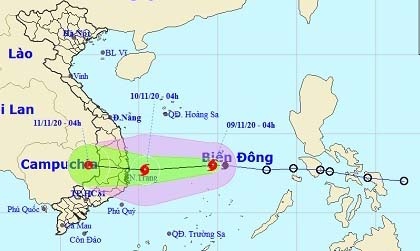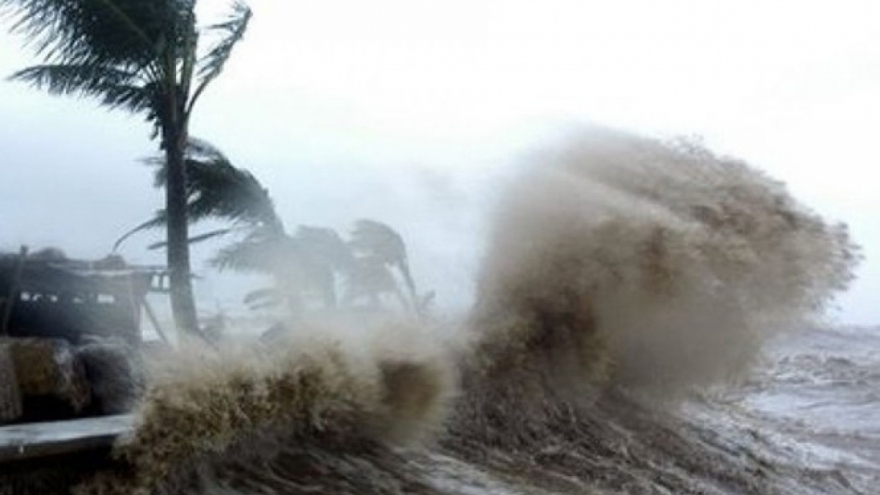Storm Etau forms, heads towards central Vietnam
VOV.VN - Central Vietnam which has taken the brunt of recent subsequent storms is bracing itself for another storm which has developed in the East Sea and is heading towards the country’s south-central coast.

At 04.00am on November 9, storm Etau, the 12th to hit East Sea this year, was located at 180km north of Song Tu Tay island of Vietnam’s Truong Sa archipelago, packing winds of between 60-75kph, with gusts of 110kph.
In the next 14 hours, the storm is forecast to move west at speeds of 15-20kph and is likely to strengthen further, according to the National Centre of Hydro-meteorological Forecasting.
It is expected to make landfall along coastal provinces from Phu Yen to Ninh Thuan on November 10 and weaken into a tropical depression.
Together with a cold air front moving from the north, Etau will cause heavy rain in provinces from Quang Tri to Khanh Hoa with widespread rainfall of 200-400mm or even over 400mm, from November 9-12.
Meteorologists raised the natural disaster risk to level 3 out of the five-level alert system.
They also warned about another tropical depression/storm to form and affect central Vietnam shortly after the 12th storm dissipates.

